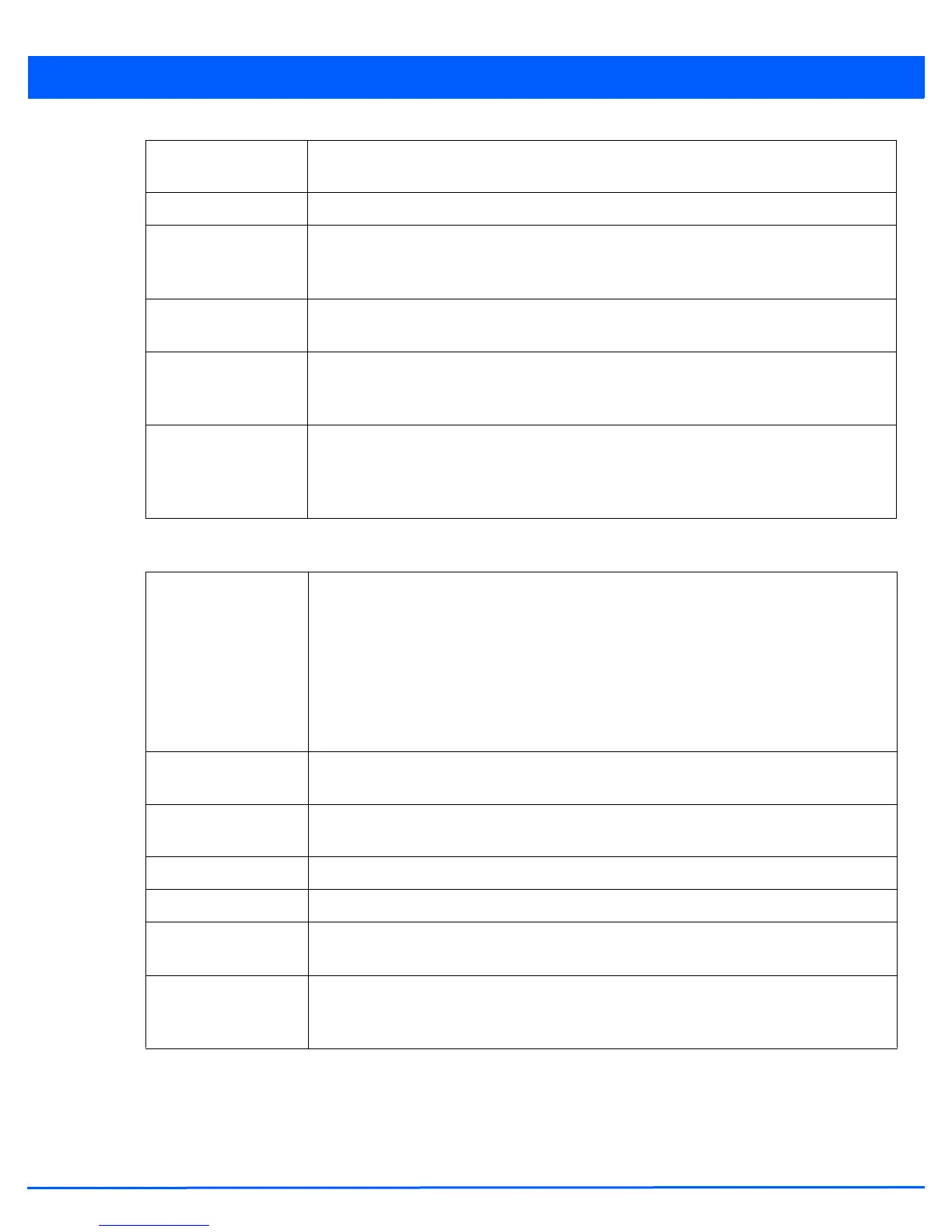Statistics 13 - 147
The RF Quality Index area displays the following information:
Tx Dropped Packets Displays the client’s number of dropped packets while transmitting to its connected access
point.
Tx Retries Displays the total number of client transmit retries with its connected access point.
Rx Errors Displays the errors encountered by the client during data transmission. The higher the error
rate, the less reliable the connection or data transfer between client and connected access
point.
Rx Actions Displays the number of receive actions during data transmission with the client’s connected
access point.
Rx Probes Displays the number of probes sent. A probe is a program or other device inserted at a key
juncture in a for network for the purpose of monitoring or collecting data about network
activity.
Rx Power Save Poll Displays the power save using the Power Save Poll (PSP) mode. Power Save Poll is a protocol,
which helps to reduce the amount of time a radio needs to powered. PSP allows the WiFi
adapter to notify the access point when the radio is powered down. The access point holds
any network packet to be sent to this radio.
RF Quality Index Displays information on the RF quality of the selected wireless client. The RF quality index is
the overall effectiveness of the RF environment as a percentage of the connect rate in both
directions as well as the retry rate and the error rate. The RF quality index value can be
interpreted as:
• 0 – 20 (Very low utilization)
• 20 – 40 (Low utilization)
• 40 – 60 (Moderate utilization)
• 60 and above (High utilization)
Retry Rate Displays the average number of retries per packet. A high number indicates possible network
or hardware problems.
SNR Displays the connected client’s signal to noise ratio (SNR). A high SNR could warrant a
different access point connection to improve performance.
Signal Displays the power of the radio signals in - dBm.
Noise Displays the disturbing influences on the signal in - dBm.
Error Rate Displays the number of received bit rates altered due to noise, interference and distortion. It’s
a unitless performance measure.
MOS Score Displays average voice call quality using the Mean Opinion Score (MOS) call quality scale. The
MOS scale rates call quality on a scale of 1-5, with higher scores being better. If the MOS
score is lower than 3.5, it’s likely users will not be satisfied with the voice quality of their call.

